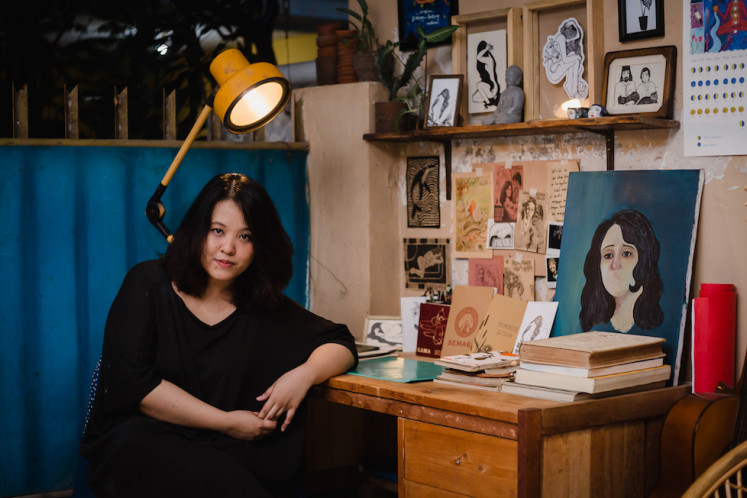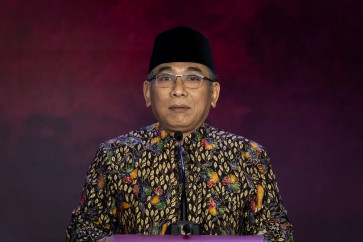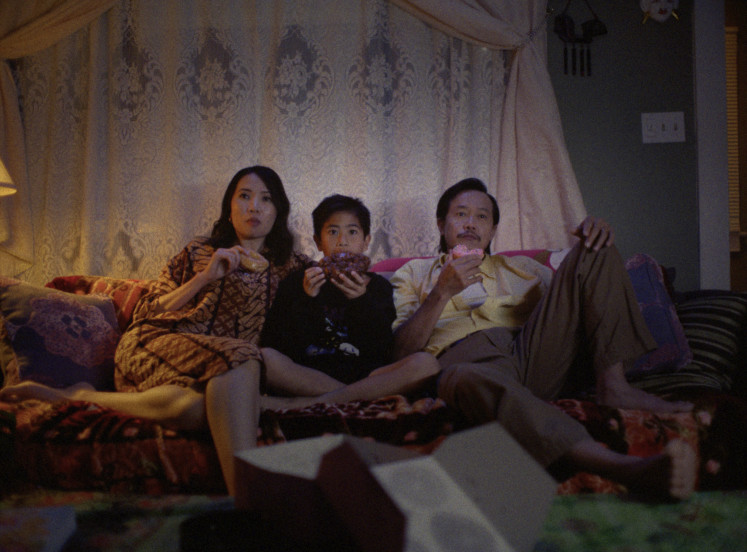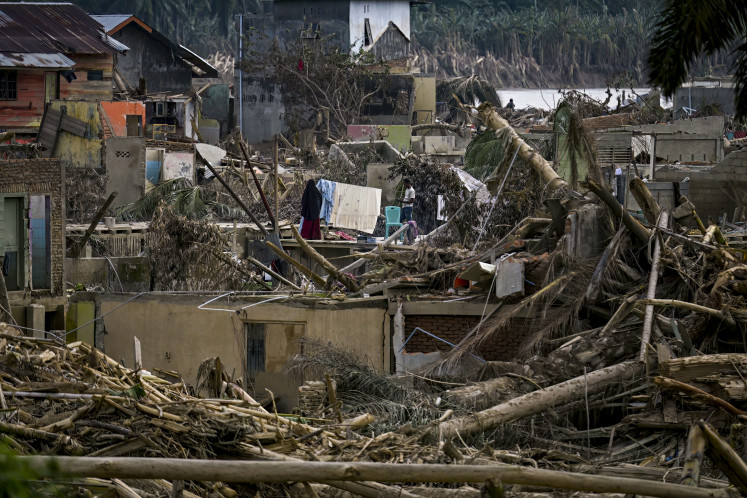Popular Reads
Top Results
Can't find what you're looking for?
View all search resultsPopular Reads
Top Results
Can't find what you're looking for?
View all search resultsErotic art in Indonesia: Outwardly scorned, secretly enjoyed
A furtive peek into the country’s sensual art world.
Change text size
Gift Premium Articles
to Anyone
C
andrika Soewarno's desk was dimmer than usual, so she turned on the main light, even though the sun hadn't fully set. "These days the sky gets dark easily, and heavy rain can occur at any time," she said.
Candrika had just finished an illustration, working on a porch at her home in Surabaya that served as her unofficial workspace. The porch was filled with varieties of paper, pens, Chinese ink and some plants to keep things feeling fresh.
Candrika is an artist who specializes in erotic and sensual illustrations. The 32-year-old has independently published four illustrated books, both physically and on digital platforms. Courageous in expressing her vision, Candrika has contended with persistent sexism, an unsurprising but maddening reality of the profession.
“I started by making postcards. Then, from 2018 to 2020, I published illustrated books such as Tumbuh Jiwa, Semara, Kama and Tandur – all published independently,” said Candrika.
Candrika's professional work began in 2008, while she was a visual communication design student at the Jakarta Arts Institute (IKJ). In her second year there, she accepted an offer to take part in a group exhibition organized by the university.
At the exhibition, Candrika, who has a particular interest in anatomy, displayed sensual illustrations of the human body. Committee members and visitors, most of whom were her classmates, were shocked and responded negatively.
“When the exhibition committee found out about my work, they put it at the end of the hall so no one would see it. There were several visitors and committee members who then harassed me. What I received the most at that time was verbal sexual harassment and people asking to have sex [with me],” said Candrika.
Candrika continued making erotic art, intending to teach the public about sexual expression and bodily exploration, both of which remain taboo in Indonesia.
Whenever she uploads her work on social media, a barrage of digital harassment follows.
"There are various kinds of harassment. Some people send photos of their genitals, some call me a prostitute, a pervert, and many also report my photos [as sexually explicit].”
Defining eroticism
The Indonesian public often debates works of art that have elements of eroticism. One problem is that the definition of eroticism, according to the Great Dictionary of the Indonesian Language (KBBI) is: (1) a state of arousal of lust; (2) continuous sexual desire. This definition of eroticism makes it easy for the public to attach accusatory labels to artists creating work with any elements deemed “erotic”.
Cecil Mariani, a lecturer in visual communication design at the Jakarta Arts Institute, said the stigma against erotic art was not only based on its definition, but also on the artist’s gender.
“Erotic works have their own contradictions. Those made by men will receive different responses than those made by women," said Cecil, who is also a researcher at an art collective called Prakerti.
The KBBI also narrowly defines women as “people who have a vagina, can menstruate, become pregnant, give birth to children and breastfeed”.
Artist Candrika Soewarno at her desk. (JP/Ivan Darski)Recently, artist Ika Vantiani responded to the rigidity of this definition in her exhibition entitled Women in the Big Indonesian Dictionary. Ika Vantiani presented the definitions of women from various editions of the KBBI over 30 years. In those years, the definition of woman did not develop and remained limited to reproduction and sex.
“If the definition of ‘woman’ by itself is already negative, just imagine women doing things that are also considered negative by formal definition, like eroticism," said Cecil.
In some cases, including Indonesia’s, the more ostensibly modern a society becomes, the stronger the attempts to stifle erotic art. Sinta Ridwan, a philologist and archaeologist at the University of Indonesia and a researcher at Anantarupa Studios, discussed the history of erotic art in Indonesia.
“Around the 7th to the 13th centuries, the reliefs, carvings and statues in the temple complex, especially those of the Tantric sect, such as the Sukuh and Cetho temples, were very ‘vulgar’. The body is a representation of the self, a symbol of creation and fertility. The very bottom of Borobudur temple, which is called kamadathu, also displays erotic and ‘vulgar’ things as symbols of lust," said Sinta.
A piece by erotic artist Candrika Soewarno. (JP/Ivan Darski)As the archaeological record extends toward the present day, erotic art becomes rarer. This limited people’s exposure to such imagery, making it increasingly taboo as time went by.
“It could be that these erotic works changed in medium. In the past, they were carved for temple reliefs and statues that could be seen clearly by anyone. Then, they switched to historical literary texts such as Centhini, Assiklaibineng, Kawruh Senggama and, perhaps the youngest, Narasawan. Eroticism became a bit hidden because not everyone could read.” said Sinta.
Beyond conventional erotic art
Many artists and observers consider normalizing discourse about the body and sexual behavior to be the next challenge for erotic art.
Cecil Mariani noted that artist IGAK Murniasih's erotic paintings often depicted absurd sexual interactions: images of private parts mixed with non-sexual objects, such as shovels and candles, to make statements about lust and the idea of masculine superiority.
"Erotic art can easily slip into seeming to reinforce masculinity, which objectifies the body if presented ‘raw’ and as is” Cecil said. To truly make a difference, she said, erotic art needed use unorthodox metaphors and allegories to “slap awareness into people”.














